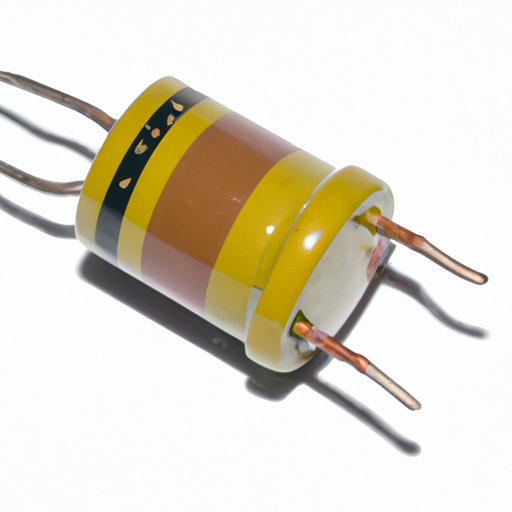Form: :
2024-03-25 03:18:13
0
Signal converters are essential components in various electronic devices and systems, as they play a crucial role in converting one type of signal into another. This conversion process is necessary to ensure compatibility between different devices and to enable the transmission of data or information in a format that can be easily understood and processed. In recent years, there have been significant advancements in signal converter technology, leading to the development of more efficient and versatile devices that offer improved performance and reliability.One of the latest signal converter specifications that have gained popularity in the industry is the use of high-speed digital-to-analog converters (DACs) and analog-to-digital converters (ADCs). These converters are capable of converting signals at very high speeds, making them ideal for applications that require real-time processing of data, such as in telecommunications, industrial automation, and medical imaging. High-speed DACs and ADCs are also used in high-definition audio and video systems, where they can deliver superior sound and image quality.Another important specification in signal converters is the resolution, which refers to the number of bits used to represent the signal. Higher resolution converters can provide more accurate and detailed conversion of signals, resulting in better overall performance. For example, a 16-bit DAC can provide a higher level of precision compared to an 8-bit DAC, allowing for more accurate reproduction of audio signals with greater dynamic range and clarity.Signal converters also come in various form factors, including standalone modules, integrated circuits, and software-based solutions. Standalone modules are typically used in industrial applications where ruggedness and reliability are essential, while integrated circuits are commonly found in consumer electronics and mobile devices. Software-based solutions, on the other hand, offer flexibility and scalability, allowing for easy customization and integration into existing systems.In terms of connectivity, signal converters now come with a wide range of interfaces, including USB, Ethernet, HDMI, and wireless options such as Bluetooth and Wi-Fi. These interfaces enable seamless integration with different devices and systems, making it easier to transmit and receive signals across various platforms. Additionally, signal converters with multiple input and output channels are now available, allowing for the simultaneous conversion of multiple signals in complex systems.One of the key trends in signal converter technology is the integration of advanced features such as digital signal processing (DSP) capabilities, which enable real-time signal processing and filtering. DSP algorithms can be used to enhance the performance of signal converters by reducing noise, improving signal-to-noise ratio, and compensating for signal distortions. This results in higher-quality signal conversion and improved overall system performance.Another important development in signal converter technology is the use of power-efficient designs that consume less energy and generate less heat. This is particularly important in portable devices and battery-powered systems, where energy efficiency is critical for extending battery life and reducing operating costs. Power-efficient signal converters also help reduce the environmental impact of electronic devices by lowering energy consumption and minimizing heat dissipation.In conclusion, the latest signal converter specifications reflect the ongoing advancements in technology and the increasing demand for high-performance, versatile, and energy-efficient devices. With the development of high-speed converters, high-resolution capabilities, advanced features such as DSP, and power-efficient designs, signal converters are now more capable than ever of meeting the diverse needs of modern electronic systems. As technology continues to evolve, we can expect further innovations in signal converter technology that will drive the development of even more advanced and sophisticated devices in the future.
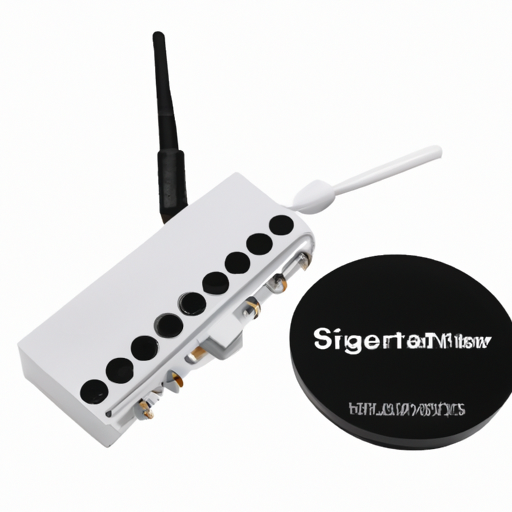
Form: :
2024-03-24 03:18:14
0
Signal converters are essential components in various industries, allowing for the seamless conversion of signals from one form to another. These devices play a crucial role in ensuring that different systems can communicate effectively and work together harmoniously. There are several popular signal converter product types available on the market, each designed to meet specific needs and requirements. In this article, we will explore some of the most common signal converter product types and their applications.Analog to Digital Converters (ADCs)Analog to Digital Converters, or ADCs, are devices that convert analog signals into digital signals. This conversion is necessary when working with digital systems that require digital input signals. ADCs are commonly used in applications such as data acquisition systems, digital signal processing, and communication systems. These devices are available in various configurations, including single-channel and multi-channel options, with different resolution and sampling rates to suit different requirements.Digital to Analog Converters (DACs)Digital to Analog Converters, or DACs, are devices that convert digital signals into analog signals. This conversion is necessary when working with analog systems that require analog input signals. DACs are commonly used in applications such as audio systems, video systems, and control systems. These devices are available in various configurations, including voltage output and current output options, with different resolution and output ranges to suit different requirements.Voltage to Current ConvertersVoltage to Current Converters are devices that convert voltage signals into current signals. This conversion is necessary when working with systems that require current input signals instead of voltage input signals. Voltage to Current Converters are commonly used in applications such as process control systems, motor control systems, and instrumentation systems. These devices are available in various configurations, including voltage-controlled current sources and voltage-controlled current sinks, with different output ranges and accuracy levels to suit different requirements.Current to Voltage ConvertersCurrent to Voltage Converters are devices that convert current signals into voltage signals. This conversion is necessary when working with systems that require voltage input signals instead of current input signals. Current to Voltage Converters are commonly used in applications such as sensor interfacing, data acquisition systems, and instrumentation systems. These devices are available in various configurations, including current-controlled voltage sources and current-controlled voltage sinks, with different input ranges and accuracy levels to suit different requirements.Frequency to Voltage ConvertersFrequency to Voltage Converters are devices that convert frequency signals into voltage signals. This conversion is necessary when working with systems that require voltage input signals that are proportional to the frequency of the input signal. Frequency to Voltage Converters are commonly used in applications such as frequency measurement systems, speed control systems, and signal conditioning systems. These devices are available in various configurations, including linear and logarithmic response options, with different frequency ranges and sensitivity levels to suit different requirements.Voltage to Frequency ConvertersVoltage to Frequency Converters are devices that convert voltage signals into frequency signals. This conversion is necessary when working with systems that require frequency input signals that are proportional to the voltage of the input signal. Voltage to Frequency Converters are commonly used in applications such as frequency synthesis systems, pulse-width modulation systems, and signal generation systems. These devices are available in various configurations, including voltage-controlled oscillators and voltage-to-frequency converters, with different frequency ranges and linearity levels to suit different requirements.In conclusion, signal converters play a crucial role in various industries, allowing for the seamless conversion of signals from one form to another. There are several popular signal converter product types available on the market, each designed to meet specific needs and requirements. Whether you need to convert analog signals to digital signals, digital signals to analog signals, voltage signals to current signals, current signals to voltage signals, frequency signals to voltage signals, or voltage signals to frequency signals, there is a signal converter product type that can meet your requirements. It is essential to choose the right signal converter product type for your application to ensure optimal performance and compatibility with your system.
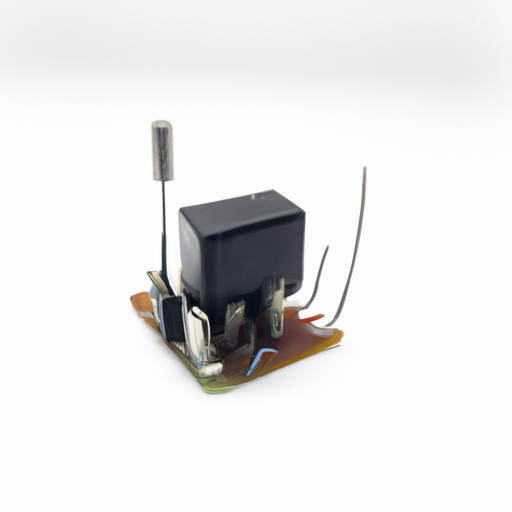
Form: :
2024-03-23 03:18:12
0
Product standards for adjustable sensors are essential to ensure that they meet the necessary requirements for quality, safety, and performance. These standards help manufacturers produce reliable and consistent products that meet the needs of consumers and comply with regulations. In this article, we will discuss the product standards for adjustable sensors, their importance, and how they are developed and implemented.Adjustable sensors are devices that can be calibrated or modified to detect and measure various parameters such as temperature, pressure, light, or motion. These sensors are used in a wide range of applications, including industrial automation, automotive systems, consumer electronics, and medical devices. To ensure that adjustable sensors perform accurately and reliably, they must meet certain product standards.Product standards for adjustable sensors are developed by organizations such as the International Organization for Standardization (ISO), the American National Standards Institute (ANSI), and the Institute of Electrical and Electronics Engineers (IEEE). These standards define the requirements that adjustable sensors must meet in terms of design, construction, performance, and testing. They also specify the methods for evaluating compliance with these requirements.One of the key product standards for adjustable sensors is accuracy. Sensors must be able to measure the desired parameter with a high degree of precision and repeatability. This requires careful calibration and testing to ensure that the sensor's output is consistent and reliable. Standards for accuracy may specify the acceptable range of error for different types of sensors and the methods for calibrating and verifying their performance.Another important product standard for adjustable sensors is reliability. Sensors must be able to operate consistently over time and under various environmental conditions. This requires robust design and construction to withstand factors such as temperature extremes, humidity, vibration, and electromagnetic interference. Standards for reliability may include requirements for durability, environmental testing, and failure analysis.In addition to accuracy and reliability, product standards for adjustable sensors may also cover other aspects such as safety, compatibility, and interoperability. Safety standards ensure that sensors do not pose a risk of harm to users or the environment. Compatibility standards define the interfaces and communication protocols that sensors must support to work with other devices and systems. Interoperability standards ensure that sensors from different manufacturers can work together seamlessly.Product standards for adjustable sensors are typically developed through a consensus-based process involving industry stakeholders, regulatory agencies, and technical experts. These standards are regularly reviewed and updated to reflect advances in technology, changes in regulations, and feedback from users. Manufacturers that comply with these standards can demonstrate the quality and reliability of their products, gain the trust of customers, and access new markets.In conclusion, product standards for adjustable sensors are essential to ensure that these devices meet the necessary requirements for quality, safety, and performance. These standards define the criteria that sensors must meet in terms of accuracy, reliability, safety, compatibility, and interoperability. By complying with these standards, manufacturers can produce reliable and consistent products that meet the needs of consumers and comply with regulations. As technology continues to evolve, product standards for adjustable sensors will play a crucial role in ensuring the quality and reliability of these essential devices.
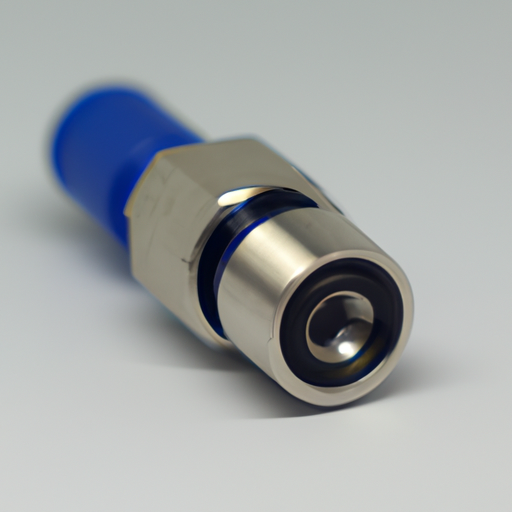
Form: :
2024-03-22 03:11:02
0
Choosing the right spot for an adjustable sensor is crucial in ensuring its effectiveness and accuracy. Whether you are installing a motion sensor for security purposes, a light sensor for energy efficiency, or a temperature sensor for climate control, the location of the sensor plays a key role in its performance. In this article, we will discuss some important factors to consider when choosing the spot for an adjustable sensor.1. Purpose of the Sensor
The first step in choosing the spot for an adjustable sensor is to determine its purpose. Different sensors are designed to detect different types of stimuli, such as motion, light, temperature, or sound. Understanding the specific function of the sensor will help you identify the best location for it. For example, a motion sensor should be placed in an area where it can detect movement easily, while a light sensor should be positioned in a spot where it can measure ambient light levels accurately.2. Environmental Factors
Consider the environmental factors that may affect the performance of the sensor. For example, if the sensor is exposed to direct sunlight, it may give inaccurate readings. Similarly, placing a sensor near a heat source or air conditioning vent can affect its temperature readings. Make sure to choose a spot that is shielded from direct sunlight, extreme temperatures, and other environmental factors that could interfere with the sensor's operation.3. Accessibility
Another important factor to consider when choosing the spot for an adjustable sensor is accessibility. Make sure that the sensor is easily accessible for maintenance and calibration. Placing the sensor in a hard-to-reach location can make it difficult to adjust or troubleshoot if needed. Consider the ease of access when deciding on the sensor's placement.4. Line of Sight
For sensors that rely on line of sight, such as motion sensors or light sensors, it is important to choose a spot that provides an unobstructed view of the area to be monitored. Avoid placing the sensor behind obstacles such as furniture, plants, or walls, as this can block the sensor's detection capabilities. Make sure that the sensor has a clear line of sight to the target area for optimal performance.5. Height and Angle
The height and angle at which the sensor is mounted can also affect its performance. For example, a motion sensor should be mounted at a height that allows it to detect movement at the desired range. Similarly, a light sensor should be positioned at an angle that allows it to measure light levels accurately. Consider the optimal height and angle for the sensor based on its function and the area to be monitored.6. Test and Adjust
Once you have chosen a spot for the adjustable sensor, it is important to test its performance and make any necessary adjustments. Monitor the sensor's readings and make sure that it is detecting stimuli accurately. If the sensor is not performing as expected, consider repositioning it or making adjustments to its settings. Regular testing and calibration are essential to ensure the sensor's reliability and accuracy.In conclusion, choosing the right spot for an adjustable sensor is essential in maximizing its effectiveness and accuracy. Consider the purpose of the sensor, environmental factors, accessibility, line of sight, height and angle, and test and adjust as needed to ensure optimal performance. By following these guidelines, you can select the best location for your adjustable sensor and achieve reliable and accurate results.
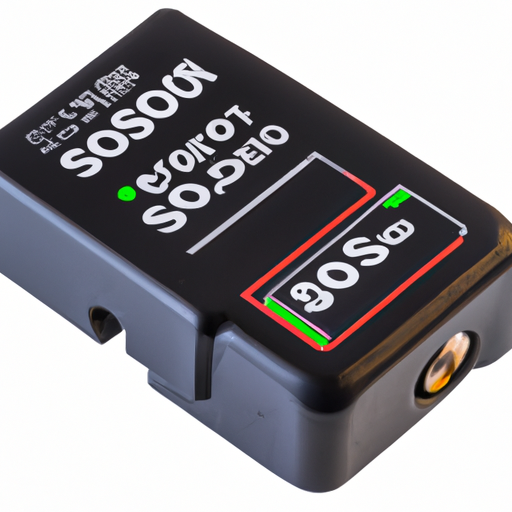
Form: :
2024-03-21 03:18:06
0
Fixed electrical sensors are an essential component in various industries, including manufacturing, automotive, aerospace, and healthcare. These sensors play a crucial role in monitoring and controlling various parameters such as temperature, pressure, flow, and level in industrial processes. As a result, the market for fixed electrical sensors is expected to witness significant growth in the coming years.In order to understand the market policies of fixed electrical sensors, it is important to first understand the key players in the market. Some of the leading companies in the fixed electrical sensor market include Honeywell International Inc., Siemens AG, ABB Ltd., Schneider Electric SE, and Emerson Electric Co. These companies are constantly innovating and introducing new products to meet the evolving needs of their customers.One of the key market policies of fixed electrical sensors is the focus on product quality and reliability. Given the critical role that these sensors play in industrial processes, it is essential for manufacturers to ensure that their products meet the highest standards of quality and reliability. This includes rigorous testing and certification processes to ensure that the sensors perform as expected in various operating conditions.Another important market policy of fixed electrical sensors is the emphasis on customization and flexibility. Different industries have different requirements when it comes to sensor technology, and manufacturers need to be able to tailor their products to meet these specific needs. This includes offering a wide range of sensor types, sizes, and configurations to accommodate different applications.In addition, manufacturers of fixed electrical sensors need to stay abreast of the latest technological advancements in sensor technology. This includes developments in materials science, signal processing, and wireless communication, among others. By incorporating these advancements into their products, manufacturers can offer sensors that are more accurate, reliable, and efficient.Furthermore, market policies of fixed electrical sensors also include a focus on sustainability and environmental responsibility. As industries strive to reduce their carbon footprint and minimize waste, there is a growing demand for sensors that are energy-efficient and environmentally friendly. Manufacturers need to ensure that their products meet these requirements by using sustainable materials and manufacturing processes.In terms of market dynamics, the fixed electrical sensor market is expected to witness steady growth in the coming years. This growth can be attributed to factors such as increasing automation in industries, the rise of the Internet of Things (IoT), and the growing demand for smart sensors. As industries become more connected and data-driven, the need for reliable and accurate sensors will only continue to increase.In conclusion, the market policies of fixed electrical sensors are focused on product quality, customization, technological innovation, sustainability, and market dynamics. By adhering to these policies, manufacturers can stay competitive in a rapidly evolving market and meet the needs of their customers. With the increasing demand for sensors in various industries, the future looks bright for the fixed electrical sensor market.

Form: :
2024-03-20 03:26:22
0
Fixed electrical sensors are an essential component in many industrial and commercial applications, providing crucial data and feedback to ensure the smooth operation of various systems. These sensors are designed to detect changes in electrical signals and provide accurate measurements of various parameters such as temperature, pressure, flow, and level.In recent years, there have been significant advancements in fixed electrical sensor technology, leading to the development of sensors with improved accuracy, reliability, and performance. Manufacturers are constantly striving to enhance the specifications of these sensors to meet the evolving needs of industries such as manufacturing, automotive, aerospace, and healthcare.One of the key specifications of fixed electrical sensors is their measurement range. This refers to the minimum and maximum values that the sensor can accurately measure. For example, a temperature sensor may have a measurement range of -50°C to 150°C, while a pressure sensor may have a range of 0 to 1000 psi. It is important for sensors to have a wide measurement range to ensure they can accurately capture data in a variety of operating conditions.Another important specification is the accuracy of the sensor. This refers to how closely the sensor's measurements match the actual value of the parameter being measured. For example, a sensor with an accuracy of ±1% means that its measurements can deviate by up to 1% from the true value. High accuracy sensors are crucial for applications where precise measurements are required, such as in medical devices or laboratory equipment.The resolution of a sensor is also a critical specification. This refers to the smallest change in the parameter being measured that the sensor can detect. For example, a sensor with a resolution of 0.1°C can detect temperature changes as small as 0.1°C. Sensors with high resolution are essential for applications where small changes in the parameter being measured are significant, such as in environmental monitoring or research.Response time is another important specification for fixed electrical sensors. This refers to the time it takes for the sensor to detect a change in the parameter being measured and provide an output signal. Fast response times are crucial for applications where real-time monitoring and control are required, such as in industrial automation or process control systems.In addition to these key specifications, fixed electrical sensors may also have other features such as built-in self-calibration, digital communication interfaces, and compatibility with various mounting options. These features can enhance the functionality and usability of the sensors in different applications.Overall, the latest fixed electrical sensor specifications reflect the ongoing advancements in sensor technology, with manufacturers continuously improving the accuracy, reliability, and performance of these sensors to meet the diverse needs of industries. By understanding and selecting sensors with the right specifications for their specific applications, businesses can ensure the efficient and reliable operation of their systems.
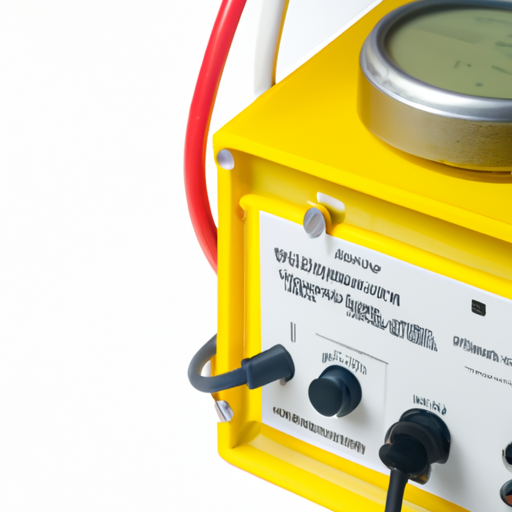
Form: :
2024-03-19 03:26:32
0
Polymer capacitors are a type of electrolytic capacitor that offer several advantages over traditional aluminum electrolytic capacitors. These advantages make polymer capacitors a popular choice for a wide range of electronic applications. In this article, we will explore the benefits of polymer capacitor products in detail.1. Low ESR and ESL: One of the key advantages of polymer capacitors is their low equivalent series resistance (ESR) and equivalent series inductance (ESL). This results in improved performance in high-frequency applications, as well as reduced power losses and heat generation. Low ESR and ESL also contribute to better stability and reliability of the capacitor.2. High ripple current handling: Polymer capacitors have a higher ripple current rating compared to traditional aluminum electrolytic capacitors. This makes them suitable for applications that require high current handling capabilities, such as power supplies and voltage regulators. The ability to handle high ripple currents without overheating or failing is a significant advantage of polymer capacitors.3. Long lifespan: Polymer capacitors have a longer lifespan compared to aluminum electrolytic capacitors. This is due to their solid polymer electrolyte, which is more stable and less prone to degradation over time. The extended lifespan of polymer capacitors makes them a cost-effective choice for applications that require long-term reliability.4. Low leakage current: Polymer capacitors have a lower leakage current compared to aluminum electrolytic capacitors. This is important in applications where low power consumption and high efficiency are critical. The low leakage current of polymer capacitors helps to minimize energy losses and improve overall system performance.5. High temperature tolerance: Polymer capacitors have a higher operating temperature range compared to aluminum electrolytic capacitors. This makes them suitable for use in harsh environments where temperature fluctuations are common. The ability to withstand high temperatures without compromising performance or reliability is a key advantage of polymer capacitors.6. Compact size: Polymer capacitors are available in smaller and more compact sizes compared to aluminum electrolytic capacitors. This makes them ideal for applications where space is limited or where a high component density is required. The compact size of polymer capacitors allows for greater design flexibility and easier integration into electronic devices.7. RoHS compliance: Polymer capacitors are RoHS compliant, meaning they do not contain hazardous substances such as lead, mercury, or cadmium. This makes them environmentally friendly and safe for use in electronic products. The RoHS compliance of polymer capacitors is an important factor for manufacturers looking to meet regulatory requirements and reduce their environmental impact.8. Wide range of capacitance values: Polymer capacitors are available in a wide range of capacitance values, making them suitable for a variety of applications. Whether you need a small capacitor for filtering or decoupling, or a larger capacitor for energy storage or power factor correction, polymer capacitors offer a range of options to meet your specific requirements.In conclusion, polymer capacitors offer several advantages over traditional aluminum electrolytic capacitors, including low ESR and ESL, high ripple current handling, long lifespan, low leakage current, high temperature tolerance, compact size, RoHS compliance, and a wide range of capacitance values. These benefits make polymer capacitors a popular choice for a wide range of electronic applications, from consumer electronics to industrial equipment. If you are looking for a reliable and high-performance capacitor solution, consider using polymer capacitors for your next project.
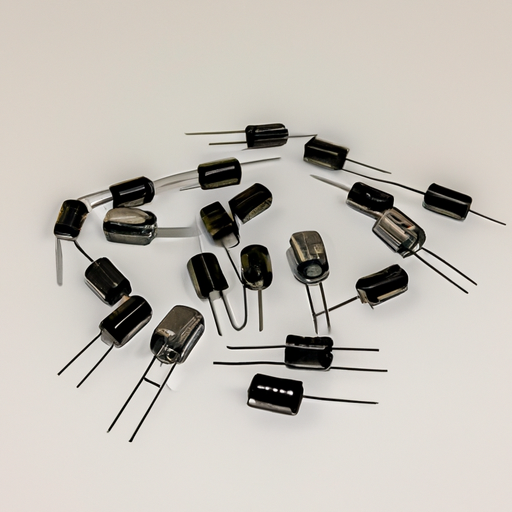
Form: :
2024-03-18 03:22:10
0
Silicon capacitors are essential components in a wide range of electronic devices and systems, playing a crucial role in storing and releasing electrical energy. These capacitors are widely used in various practical applications due to their high capacitance, low leakage current, and excellent stability over a wide range of temperatures. In this article, we will explore the role of silicon capacitor products in practical applications and discuss their importance in modern electronics.Silicon capacitors are commonly used in power supply circuits, filtering circuits, timing circuits, and signal coupling applications. They are also used in radio frequency (RF) circuits, audio amplifiers, and sensor interfaces. The high capacitance of silicon capacitors allows them to store a large amount of electrical energy, making them ideal for applications that require high energy storage capacity.One of the key advantages of silicon capacitors is their low leakage current, which ensures that the stored energy is not dissipated over time. This makes them suitable for applications that require long-term energy storage, such as backup power supplies and energy harvesting systems. Silicon capacitors also have excellent stability over a wide range of temperatures, making them ideal for use in harsh environments where temperature fluctuations are common.In power supply circuits, silicon capacitors are used to smooth out voltage fluctuations and provide a stable output voltage. They are often connected in parallel with the power source to filter out high-frequency noise and ripple voltage. Silicon capacitors are also used in voltage regulator circuits to improve the transient response and stability of the regulator.In filtering circuits, silicon capacitors are used to block or pass certain frequencies of signals. They are often connected in series with a resistor to form a low-pass or high-pass filter. Silicon capacitors are also used in timing circuits to control the frequency and duration of signals. They are commonly used in oscillators, timers, and pulse generators.In signal coupling applications, silicon capacitors are used to transfer signals from one circuit to another without affecting the DC bias. They are often connected in series with a resistor to form a coupling network that blocks the DC component of the signal while allowing the AC component to pass through. Silicon capacitors are also used in audio amplifiers to block the DC offset and amplify the AC signal.In RF circuits, silicon capacitors are used to tune the frequency of oscillators, filters, and matching networks. They are often connected in parallel with an inductor to form a resonant circuit that can be tuned to a specific frequency. Silicon capacitors are also used in antenna matching networks to maximize the power transfer between the transmitter and the antenna.In sensor interfaces, silicon capacitors are used to convert the capacitance of a sensor into an electrical signal. They are often connected in parallel with the sensor to form a capacitive sensor interface circuit. Silicon capacitors are also used in touch sensors, proximity sensors, and pressure sensors to detect changes in capacitance and generate a corresponding output signal.Overall, silicon capacitor products play a critical role in practical applications by providing energy storage, filtering, timing, signal coupling, and tuning functions in electronic circuits. Their high capacitance, low leakage current, and excellent stability make them essential components in a wide range of electronic devices and systems. As technology continues to advance, the demand for silicon capacitors is expected to grow, driving innovation and development in the field of electronics.
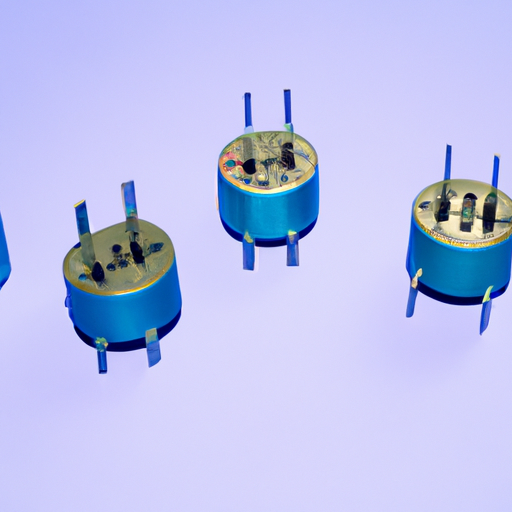
Form: :
2024-03-17 03:10:07
0
An oxidation capacitor is a type of capacitor that is specifically designed to prevent oxidation and corrosion of its internal components. This type of capacitor is commonly used in electronic devices and systems where exposure to moisture, humidity, or other environmental factors can lead to degradation of the capacitor's performance and reliability.Oxidation capacitors are typically constructed using materials that are resistant to oxidation, such as tantalum or aluminum. These materials are chosen for their ability to form a protective oxide layer on their surface, which helps to prevent further oxidation and corrosion of the internal components of the capacitor.In addition to using oxidation-resistant materials, oxidation capacitors are also designed with special coatings and seals that help to further protect the internal components from moisture and other environmental factors. These coatings and seals are typically made from materials such as epoxy resin or silicone, which are known for their ability to provide a barrier against moisture and other contaminants.One of the key benefits of using oxidation capacitors is their ability to maintain their performance and reliability over time, even in harsh environmental conditions. This is particularly important in electronic devices and systems that are used in outdoor or industrial settings, where exposure to moisture, humidity, and other environmental factors is common.In addition to their resistance to oxidation and corrosion, oxidation capacitors also offer other advantages over traditional capacitors. For example, they typically have a longer lifespan and higher reliability, which can help to reduce maintenance and replacement costs over time.Overall, oxidation capacitors are a valuable component in electronic devices and systems where protection against oxidation and corrosion is essential. By using materials and design techniques that are specifically tailored to prevent oxidation, these capacitors can help to ensure the long-term performance and reliability of electronic devices in a wide range of applications.
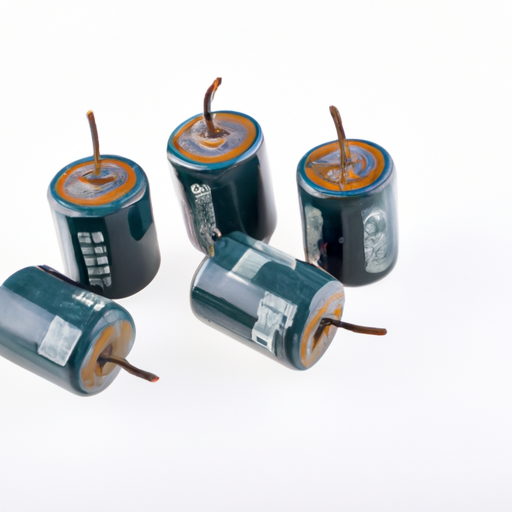
Form: :
2024-03-16 03:22:09
0
The release date for the new Variable capacitor has been highly anticipated by electronics enthusiasts and professionals alike. This innovative component promises to revolutionize the way capacitors are used in various electronic devices, offering improved performance and versatility. With its advanced features and capabilities, the new Variable capacitor is expected to set a new standard in the industry.The Variable capacitor is designed to provide a wide range of capacitance values, allowing for precise tuning and adjustment in electronic circuits. This flexibility makes it ideal for a variety of applications, from radio frequency tuning to audio signal processing. The capacitor's variable capacitance range enables it to adapt to different circuit requirements, making it a versatile and valuable component for electronics designers and engineers.One of the key features of the new Variable capacitor is its high-quality construction and materials. The capacitor is built to withstand the rigors of electronic applications, ensuring reliable performance and durability. Its compact size and lightweight design make it easy to integrate into electronic devices, while its high capacitance range offers flexibility in circuit design.In addition to its technical capabilities, the Variable capacitor also boasts a user-friendly interface that simplifies the tuning and adjustment process. The capacitor can be easily adjusted using a simple control mechanism, allowing for quick and precise changes to capacitance values. This intuitive interface makes the capacitor accessible to both experienced professionals and hobbyists, making it a valuable tool for a wide range of electronic projects.The release date for the new Variable capacitor has been eagerly awaited by electronics enthusiasts and professionals, who are eager to get their hands on this groundbreaking component. The capacitor is expected to be available for purchase in the coming months, with pre-orders already open for those who want to secure their unit early. The capacitor is expected to be priced competitively, making it accessible to a wide range of customers.Overall, the new Variable capacitor promises to be a game-changer in the world of electronics. Its advanced features, high-quality construction, and user-friendly interface make it a valuable addition to any electronic project. With its wide range of capacitance values and versatile applications, the Variable capacitor is sure to become a staple in the electronics industry. Stay tuned for the release date of this exciting new component and get ready to take your electronic projects to the next level.
